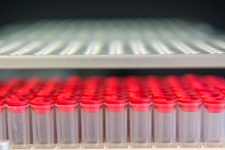Asthma & allergy


Asthma is the most common chronic lung disease in childhood. Asthma patients suffer from chronic inflammation of the airways and, as a result, from constriction of the bronchi. There is also a noticeable rise in the incidence in adults. According to the Global Asthma Report 2011, 235 million people worldwide suffer from asthma, although the World Health Organization (WHO) estimates the number to be much higher than 300 million people worldwide.
The clinical picture in children and adults with asthma is almost identical. For instance, shortness of breath, dyspnea and wheezing caused by an attack. Possible influences are, for example, viral infections, physical stress, allergens and comorbidity in adulthood. Environmental hazards as well as protective factors have been identified, e.g. smoking, diet, influence of microbes and microbial colonization of the airways. Equally, a number of genes are associated with asthma. ORMDL3/GSDM1 genes, localized on chromosome 17, were identified by Miriam F. Moffatt and her research team to be asthma-triggering genes in children, but not in adults.
Today, asthma can be effectively treated, but not cured. Further research is therefore extremely important, in order to find new approaches to solving the problem and to ultimately prevent the occurrence of this disease.
Research on asthma and allergic diseases is performed by the institutes in the Departments of Pediatric and General Respiratory Medicine at the MHH working closely with the Fraunhofer ITEM. Experience is gained for example from ongoing clinical cohorts and clinical studies on pediatric and adult asthma patients. Genetic epidemiology and functional genomics are well established in Hannover and a further strength is the investigation of early immune events due to asthma, as well as ex-vivo studies in which human lung tissue is used.